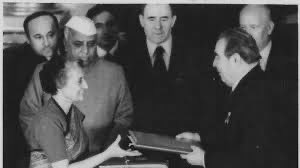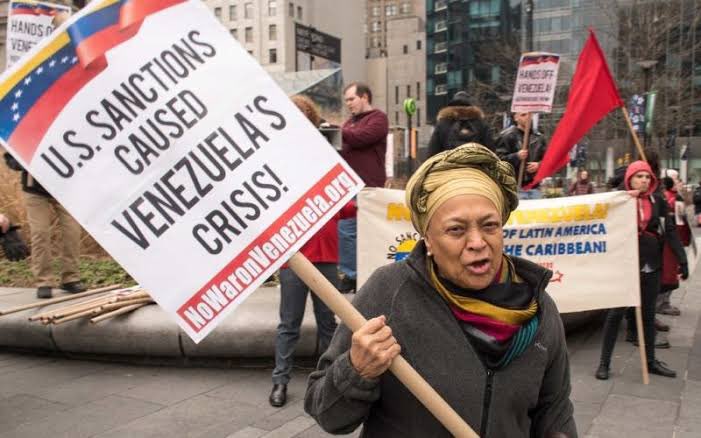The relationship between India and the United States of America has evolved over the years, shaped by historical events, strategic interests, and changing global dynamics. The intricate tapestry of India-US relations is far more than it meets the eyes of the beholder, it traces its historical background, current status, economic ties, multilateral engagements, cultural connections, and challenges.
Historical Background
1947-1965: In the aftermath of Indian independence from the British Raj in 1947, India maintained a neutral stance despite being an ally of Pakistan. However, India fostered closer ties with the Soviet Union, signing a Treaty of Peace and Friendship with the USSR in 1971.
1971-1991: Tensions arose when India conducted its first nuclear test in 1974, leading to a deterioration of relations with the USA and the imposition of sanctions. Despite Indira Gandhi’s visit to the USA in 1982, no progress was made. The Bhopal gas tragedy in 1984 further strained relations due to the lack of accountability from Union Carbide’s CEO, Warren Anderson, and pressure from the USA.
1991-2014: The era of economic liberalisation in India, marked by the introduction of the LPG (Liberalisation, Privatization, and Globalization) policies in 1991, paved the way for improved relations with the USA. The Pokhran nuclear tests in 1998 initially caused tensions, but the USA and Israel supported India during the Kargil War in 1999. In 2001, the USA lifted sanctions on India and acknowledged it as a “natural ally.” A significant diplomatic win for India was the signing of the nuclear deal with the USA during the UPA government’s tenure in 2010.
Current Relations after Modi’s Premiership
2014-present: Prime Minister Narendra Modi has elevated India-US relations to a “Global Strategic Partnership.” In 2016, India gained the status of a “Major Defense Partner” with the USA, and in 2018, India received the Strategic Trade Authorization-1 (STA-1) status, enabling the export of defence equipment from the USA.
Defence Cooperation: In 2016, India and the USA signed the Logistics Exchange Memorandum of Agreement (LEMOA), allowing both militaries to access each other’s bases for replenishment of supplies, spare parts, and services. In 2018, India signed the Communications Compatibility and Security Agreement (COMCASA), providing access to encrypted communications equipment and systems for secure communication during potential conflicts, as demonstrated during the Galwan Valley situation.
Economic Relations
India and the USA have emerged as major trading partners, with bilateral trade reaching $119.5 billion in 2021-22.
Notably, India enjoys a trade surplus with the USA, exporting more than it imports, a positive development under the Modi government.
Multilateral Relations
India and the USA share platforms like the G20, the Quad (a strategic partnership to counter China’s influence in the Indo-Pacific region), and the Financial Action Task Force (FATF), a global financial crime watchdog.
Cultural Relations
Events such as the “Howdy Modi” event in Houston, USA, in September 2019, where Prime Minister Modi addressed the Indian diaspora, have strengthened cultural ties between the two nations. Similarly, former US President Donald Trump attended the “Namaste Trump” event in Ahmedabad, India, in February 2020, fostering people-to-people connections.
Challenges with the USA
Hypocrisy over Oil Purchases: India has faced criticism from the USA for its purchase of Russian oil, despite the USA’s own selective approach to sanctioning certain oil-producing nations like Iran and Venezuela.
Arms Sales to Pakistan: Despite being a close ally of India, the USA continues to supply weapons to Pakistan, which could potentially be used against India.
India’s Engagement with US Adversaries: India has criticised the USA’s decision to block Iranian and Venezuelan oil from the global market, arguing that if the US wants India to stop buying Russian oil, it should open access to these countries’ oil supplies.
Khalistani Elements and Blackmail: Recent tensions have arisen as the USA has been accused of using Khalistani elements to deter India, with alleged threats to block drone sales and the supply of 414 engines for India’s Advanced Medium Combat Aircraft (AMCA) project.
Lessons for the Modi Government
The historical experiences with the USA, such as during the 1971 war, the Doklam dispute, and the Pulwama attack, have highlighted the need for India to adopt a “tit-for-tat” policy. Maintaining close ties with Russia and other strategic partners is crucial to counter potential pressures from the USA and safeguard India’s national interests.
The India-US relationship is multifaceted, encompassing strategic, economic, and cultural dimensions. While the partnership has grown stronger in recent years, challenges and historical grievances continue to shape the dynamics between the two nations. As India navigates this complex landscape, a balanced approach that prioritises its national interests while fostering mutual understanding and cooperation with the USA remains paramount.








